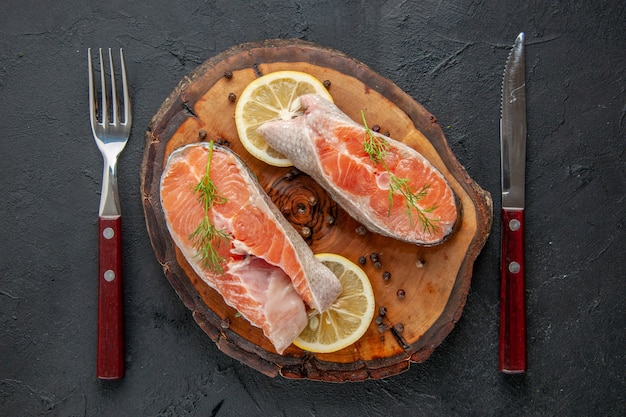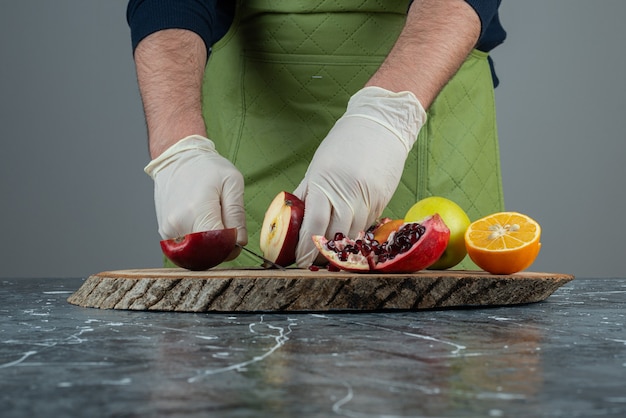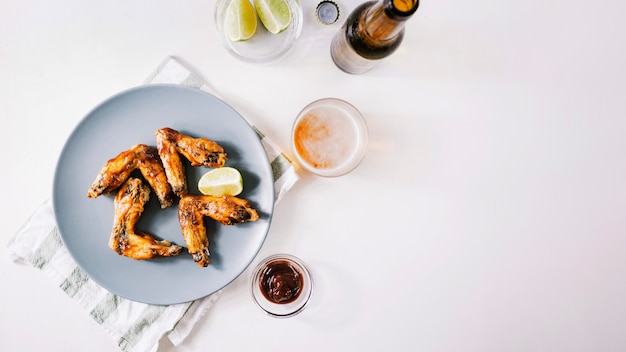Let's talk crab legs, folks. Forget those sad little frozen ones you find in the supermarket aisle. I'm talking about the real deal - the kind that makes your stomach rumble just thinking about them. You know, those plump, juicy, succulent crab legs you find at the market or your favorite seafood restaurant.
I've been a crab leg enthusiast for as long as I can remember. I've tried just about every cooking method under the sun, and trust me, some are better than others. That's why I'm writing this guide - to help you avoid those cooking disasters and unlock the secrets to perfectly cooked crab legs every single time.
This isn't just a recipe; it's a culinary journey. We'll dive into the world of crab legs, explore the best ways to cook them, and learn a few tips and tricks that even seasoned seafood lovers will appreciate. So, grab a bib, get comfortable, and let's get started!
(Part 1) choosing the right crab Legs

The first step in this delicious journey is selecting the perfect crab legs. Think of it like choosing a fine wine – it all starts with quality.
Fresh vs. Frozen: A Matter of Taste and Convenience
First, the age-old debate: fresh or frozen? fresh crab legs, if you can get your hands on them, are truly divine. The flavor is out of this world! You can usually find them at seafood markets or directly from fishermen. But, fresh crab legs can be a bit more expensive and a tad trickier to locate.
frozen crab legs, on the other hand, are far more readily available and often more budget-friendly. They also last longer, making them a practical choice for busy cooks. However, the quality of frozen crab legs can vary, so it’s important to choose carefully. Look for legs that are firm, have a bright red color, and avoid any that appear dry, discolored, or have ice crystals clinging to them.
types of crab legs: A World of Flavors
Now, let's dive into the types of crab legs you'll encounter. There are many varieties, but the most popular for cooking are:
snow crab legs: These are the most common and readily available. They offer a delicate, sweet flavor and a good meat-to-shell ratio, making them a crowd-pleaser.
king crab legs: These are the royalty of the crab leg world, offering a richer, more intense flavor. They are also much larger and meatier than snow crab, making them perfect for a special occasion.
dungeness crab legs: This Pacific Northwest favorite boasts a slightly sweet flavor and a firm texture that's absolutely delightful.
Don't Forget the Claws!
Remember, those delectable claws are often sold separately, but don't overlook them! They're packed with the sweetest, most flavorful meat, so make sure to snag a few for your feast.
The Smell Test: A Crucial Step
Finally, a good sniff test is essential. Fresh crab legs should have a clean, slightly briny aroma. If you detect anything remotely ammonia-like, it means they're not fresh and you should skip them.
(Part 2) Preparing the Crab Legs for Cooking

Now that you've chosen your crab legs, it's time to prep them for cooking.
Thawing Frozen Crab Legs: The Gentle Approach
If you're working with frozen crab legs, thawing them properly is crucial. The best way to do it is in the refrigerator overnight. This allows the legs to thaw gradually and evenly, preserving their delicate texture and flavor. Never thaw them at room temperature, as this can encourage bacteria growth.
Cleaning the Crab Legs: A Quick Rinse
Before cooking, give your crab legs a quick rinse under cold water. You might find some sand or debris clinging to them. If you're using fresh crab legs, consider removing the shells from the claws to make eating easier.
(Part 3) The Best Cooking Methods: Unlocking Flavor and Texture

Now, for the fun part: cooking those crab legs! There are a few methods that reign supreme in my book.
Steaming: Gentle Cooking for Delicate Flavor
Steaming is my go-to method for crab legs. It's a gentle process that preserves their delicate flavor and keeps the meat wonderfully moist. You'll need a large steamer basket and a pot with a lid.
Step 1: Fill the pot with about an inch of water.
Step 2: Place the steamer basket inside the pot.
Step 3: Add the crab legs to the steamer basket.
Step 4: Bring the water to a boil, then reduce the heat to low.
Step 5: Cover the pot and steam the crab legs for 10-15 minutes, or until they're cooked through.
Boiling: A Quick and Easy Option
Boiling is another popular method and offers a faster cooking time compared to steaming. However, it can sometimes dry out the meat, so be mindful.
Step 1: Fill a large pot with enough water to cover the crab legs.
Step 2: Add salt, pepper, and any other seasonings you like.
Step 3: Bring the water to a boil.
Step 4: Add the crab legs to the boiling water.
Step 5: Reduce the heat to a simmer.
Step 6: Cook the crab legs for 8-10 minutes, or until they're cooked through.
Grilling: Smoky Flavor and a Touch of Adventure
grilling crab legs adds a delicious smoky flavor and an extra layer of fun. It might be a bit more challenging, but it's worth the effort.
Step 1: Preheat your grill to medium heat.
Step 2: Brush the crab legs with olive oil and season with salt, pepper, and any other herbs or spices you fancy.
Step 3: Place the crab legs on the grill and cook for 5-7 minutes per side, or until they're cooked through.
Baking: A Simple and Versatile Approach
Baking crab legs in the oven is a simple method for cooking a large batch at once.
Step 1: Preheat your oven to 400 degrees Fahrenheit.
Step 2: Place the crab legs on a baking sheet.
Step 3: Drizzle the crab legs with melted butter and season with salt, pepper, and any other seasonings you like.
Step 4: Bake the crab legs for 10-15 minutes, or until they're cooked through.
(Part 4) Knowing When They're Done: Signs of Perfectly Cooked Crab Legs
You've cooked your crab legs, now how do you know they're ready? Here are a few ways to tell:
The Meat: The Ultimate Indicator
The most reliable way to tell if your crab legs are cooked is to check the meat. It should be opaque and white, not translucent. You can also gently pry open a leg to see if the meat is pulling away from the shell.
The Shell: A Visual Cue
The shell of cooked crab legs will be a vibrant red color. They will also feel firm and slightly brittle.
The Time: A General Guideline
The cooking time is a helpful indicator. Stick to the cooking times I mentioned earlier for each method.
(Part 5) Serving Your Crab Legs: A Feast for the Senses
Your crab legs are cooked and looking fabulous. Now, let's get ready to serve them!
The Crackers and Tools: Essential Equipment
You'll need some tools to access that delicious meat inside those shells. I recommend having a good crab cracker and a crab fork on hand. You can also use a nutcracker or a heavy kitchen knife to crack open the legs.
The Sauce: A World of Flavor Options
Now, what to serve with your crab legs? The possibilities are endless! You can go simple with melted butter, or get creative with a garlic butter sauce, a lemon herb sauce, or a spicy cocktail sauce.
The Accompaniments: A Culinary Symphony
You can also serve your crab legs with a side of corn on the cob, a refreshing coleslaw, or a crisp green salad.
The Presentation: A Feast for the Eyes
For a captivating presentation, place the crab legs on a bed of ice and arrange them on a large platter. You can also serve the sauce in a small bowl for dipping.
(Part 6) The Ultimate Crab Legs Feast: A Celebration of Food and Company
Now, let's talk about the real reason we're here – the feast! There's something truly magical about a crab leg feast. It's all about gathering around the table with loved ones, cracking open those shells, and savoring the succulent meat within.
The Ambience: Casual and Convivial
When I picture a crab leg feast, I imagine a table covered in newspaper, a large pot of steaming crab legs, and everyone getting their hands a little dirty. It's a casual and convivial atmosphere where you can relax, laugh, and truly enjoy the moment.
The Experience: A Sensory Delight
It's not just about the food; it's about the entire experience. The anticipation, the excitement of cracking open the shell, the satisfying snap of the meat, the juicy, flavorful taste – it's a sensory journey you won't forget.
The Memories: A Time for Bonding
Crab leg feasts are perfect for creating lasting memories. They're often associated with special occasions like birthdays, holidays, or family gatherings.
(Part 7) Storage and Leftovers: Maximizing Your Feast
So, you've had your crab leg feast and you have some leftovers. What to do?
Storing Crab Legs: Preserving Flavor and Quality
First, if you have any leftover cooked crab legs, store them properly. Place them in an airtight container in the refrigerator for up to 3 days. Make sure they cool completely before storing them.
Reheating: A Gentle Touch
When you're ready to enjoy those leftovers, you can reheat them gently in the microwave or oven.
Crab Salad: A Delicious Transformation
If you're feeling less adventurous, you can also use the leftover crab meat in salads, sandwiches, or even pasta dishes.
(Part 8) Crab Leg Etiquette: Navigating the Feast with Grace
Finally, let's discuss some crab leg etiquette.
The Napkin: A Shield Against Spills
Use a napkin, or even a bib, to protect your clothes from any spills or splatters. Crab legs can be a bit messy!
The Shell: A No-No
Don't try to eat the shell. It's not meant to be consumed!
The Tools: Mastering the Art of Extraction
Use the right tools to crack open the legs and extract the meat. Don't hesitate to ask for help if you're struggling.
The Manners: Enjoying with Finesse
Be mindful of your table manners and try to minimize mess. It's all about enjoying the meal and having a good time.
FAQs
What's the best way to remove the meat from the crab legs?
The best way to remove the meat from crab legs is with a crab cracker and a crab fork. You can also use a nutcracker or a heavy kitchen knife. To remove the meat from the claw, start by cracking the shell at the base of the claw. Then, use the fork to gently pry the meat out of the shell.
How can I tell if a crab leg is fresh?
Fresh crab legs should have a bright red color, a firm texture, and a slightly briny smell. They should also be free of any ice crystals or discolouration.
How long can I store cooked crab legs in the fridge?
Cooked crab legs can be stored in the fridge for up to 3 days in an airtight container.
Can I freeze cooked crab legs?
It's not recommended to freeze cooked crab legs. Freezing can change the texture of the meat and make it tough.
What are some good side dishes to serve with crab legs?
Some good side dishes to serve with crab legs include corn on the cob, coleslaw, potato salad, or a fresh green salad. You can also serve a dipping sauce like melted butter, garlic butter, lemon herb, or cocktail sauce.
Everyone is watching

How to Cook Frozen Lobster Tails Perfectly: A Step-by-Step Guide
RecipesLobster. Just the word conjures up images of lavish meals, special occasions, and a taste of luxury. But let's...

Pigs in a Blanket Cooking Time: How Long to Bake for Perfect Results
RecipesAh, pigs in a blanket. Just the name conjures up images of those delightful little parcels of crispy pastry en...

Pork Fillet Cooking Time: How Long to Cook It Perfectly
RecipesPork fillet, or tenderloin as it's sometimes called, is a real favourite in our house. It's so versatile, and...

The Ultimate Guide to Cooking Delicious Frankfurters
RecipesLet's face it, we all love a good frankfurter. It's a classic, simple, and always satisfying. But let's be rea...

Wolf Meat Recipes: A Guide to Cooking Wild Game
RecipesLet's be honest, you don't see wolf meat at your local butcher shop every day. It's a bit of a wild card, but ...
